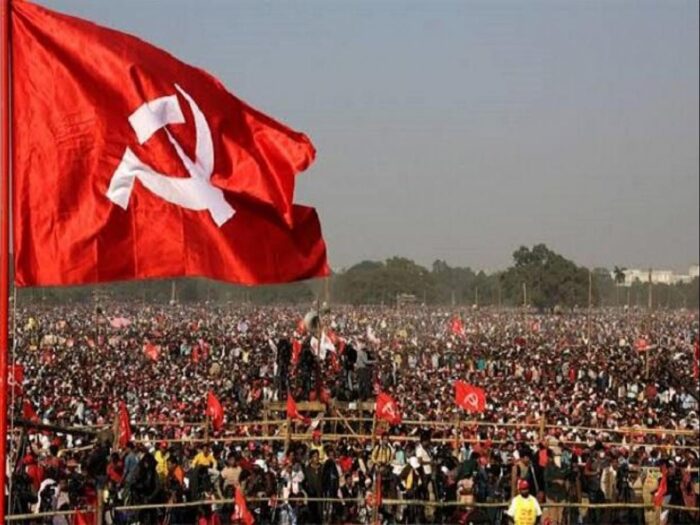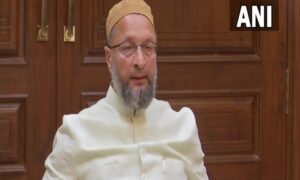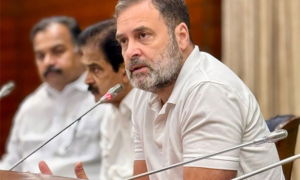
Image : Representational Purpose Only
To a person raised in Calcutta in the turbulent times of 1950’s and early 60’s it’s hard to believe the TV news clips of today informing us that the Left parties drew blank in 2021 Election to the West Bengal State Assembly – a state once called the ” Red fort” of the Marxist movement of the country from which it spread to Nepal , Assam and Tripura ! Let’s not forget that soil of Naxalbari in north Bengal nurtured Naxalism in 1967, South Asia’s longest and still active Peasant armed uprising seeking to establish a Maoist Peasant led communist state in the heart of India by a party that calls itself Marxist Leninist. And Bengal’s constructive interest in revolutionary ideas is a part of her heritage – a journey that began in the 18th century when Hooghly emerged as “Asia’s most cosmopolitan river” where the French, Dutch, English, Chinese Greeks, Danes and the Germans rubbed their shoulders with Bengal traders , artisans and the officials. The ideas of French Revolution inspired Raja Ram Mohan Roy as he saw its impact in the French settlement at Chandan Nagor. He reportedly got ecstatic when he approached the shore of France on way to England.
In the same way works of Karl Marx and Frederick Engels attracted the Bengali minds sooner than other parts of the subcontinent and more so after the Great October Revolution in Russia that V.I.Lenin led in 1917 . M.N. Roy, the great revolutionary thinker and who propounded the philosophy of “Radical Humanism” was a close associate of Lenin in Russia and was deputed to China in 1927 as the representative of the Comintern- the Communist International to assist the rising Communist Party of China led by Mao Tse Tung. His work ” Revolution and Counter Revolution in China” in German is considered a guide to understand China’s engagement with the 20 th century. Roy was instrumental in founding the Communist Party of India in Tashkent in 1920. Earlier in Mexico in 1919 M.N.Roy founded the first Communist Party outside Russia soon after the Russian Revolution in 1917 when his work attracted the attention of Lenin who invited Roy to come to Russia to assist him in the efforts to spread communism among the peoples under the imperialist rule in Asia and elsewhere.
This background might seem not very relevant to Today’s generation of Indians but the fact remains that political ideas follow a certain trajectory of growth and decline. This is what happened with the left in Bengal after the division of the country. The cadres of the communist movement drawn mainly from the revolutionary parties of East Bengal were joined by the peasants and workers movement leaders received massive support from the displaced persons from eastern Pakistan who lived in the refugee enclaves around Calcutta. This gave the communist movement its strength to organise protests,” Gheraos and Bandhs” in the city at a short notice and backed by widespread peasant unrest for the state failure to even make an attempt to carry out land reforms. And this in a state where the Zamindari system under the Permanent Settlement of Lord Cornwallis meant absence of any land rights or even proper records whatsoever for the tillers of the soil and especially the vast number of “share croppers” who moved to the left for their promise of land reforms. Thus in the 1950’s and 1960’s a volcano of discontent erupted among the three segments of the political society of Bengal- the dispossessed refugees, the urban working class engaged in industrial units under virtually colonial era service conditions characterised by ” informal engagement on extremely low wages and the poor peasantry. The left parties especially CPI captured their imaginations of the masses by the slogans of Revolution and socialism which brought the left to power firmly in 1977. True the Left leadership carried out bold land reforms which raised the farm incomes, stabilised the share croppers rights which enabled the rural economy to diversify and raised the rural effective demand for goods and services. A multiplier effect was generated in the rural economy but it ran out of its steam by the end of the century for want of a corresponding growth of industrial activities in the organised as well as unorganised sector.
This mis match was further extended to the urban and semi urban areas where a terribly unrealistic and flawed education policy of doing away with teaching of English up to the Eighth class in the schools destroyed the capacity of the state run school system either to prepare students for higher education or any employment; and coupled with stagnation of the industries and flight of capital meant lack of employment for the youth of Bengal. This alienated the middle class from the left. Also, Left’s fierce resistance to introduction of computers is often cited as an instance of poor understanding of the dynamics of the emerging economy which came up in Southern states for instance.
Yet the Left ruled for 37 years for one main reason which was well documented by late Barun Sen Gupta, the founder editor of the Bengali daily ” Bartaman”and that was by ” rigging of elections” which was made possible by its creation of a well organised class of “Party predators” who, for want of any other occupation, took to “extortions” of all types by” facilitating” what should have been done in the ordinary course by the state or any Public authority like the Municipalities , hospitals, Police or Local taxation departments. This is what is called” Tolabazi” meaning literally “the practice of picking up or siphoning” money which during the left rule became the norm that sustained the left party cadres. Sure enough the common citizen who commanded no influence with the Party in power became its victims and began to resist which really opened up space for anti left parties.
The peasant movement against land acquisition for the TATA group’s Nano Car project at Nandigram was really the flash point of anger against this politics of the left cadres who by then had become mercenaries devoid of any ideology or any worth while Public cause whatsoever by the first decade of this century. The collapse of Soviet Union in early 1990’s preceded by the fall of the Berlin Wall and the puppet Communist states of East Europe and the” quick march of Red China to capitalism under Deng Xia Peng from the late 1970’s robbed the left of what ever little ideological respectability it claimed of being a party of the oppressed. It’s interesting that virtually nothing has been written on this broad subject of collapse of communism by any left leader or intellectual of any stature of Bengal which only goes to show that the left today in Bengal is nothing but another group whose sole purpose is to literally ” live off the land”.
Mamata Banerjee, being a leader of the masses and a “Street fighter” knew how the Left cadres thrived and their weaknesses and broke the same following her remarkable success in 2011 Election and thereafter. The left is in a state of complete disarray not having any ideology or an alternative action plan except in opposing the Mamata Banerjee led Trinamool ; and therefore crazy slogans such ” Ram now, meaning support to BJP now and Bam -Left later” were heard during the just concluded Bengal Election. This also explains why so many of the left joined the BJP only to get their ” business of politics” going. The people of Bengal have at long last seen through this game of the Left.This more than anything else explains why the Left couldn’t secure even a single seat in the elections to the Bengal Legislative Assembly in 2021.
[the_ad id=’22722′]


















